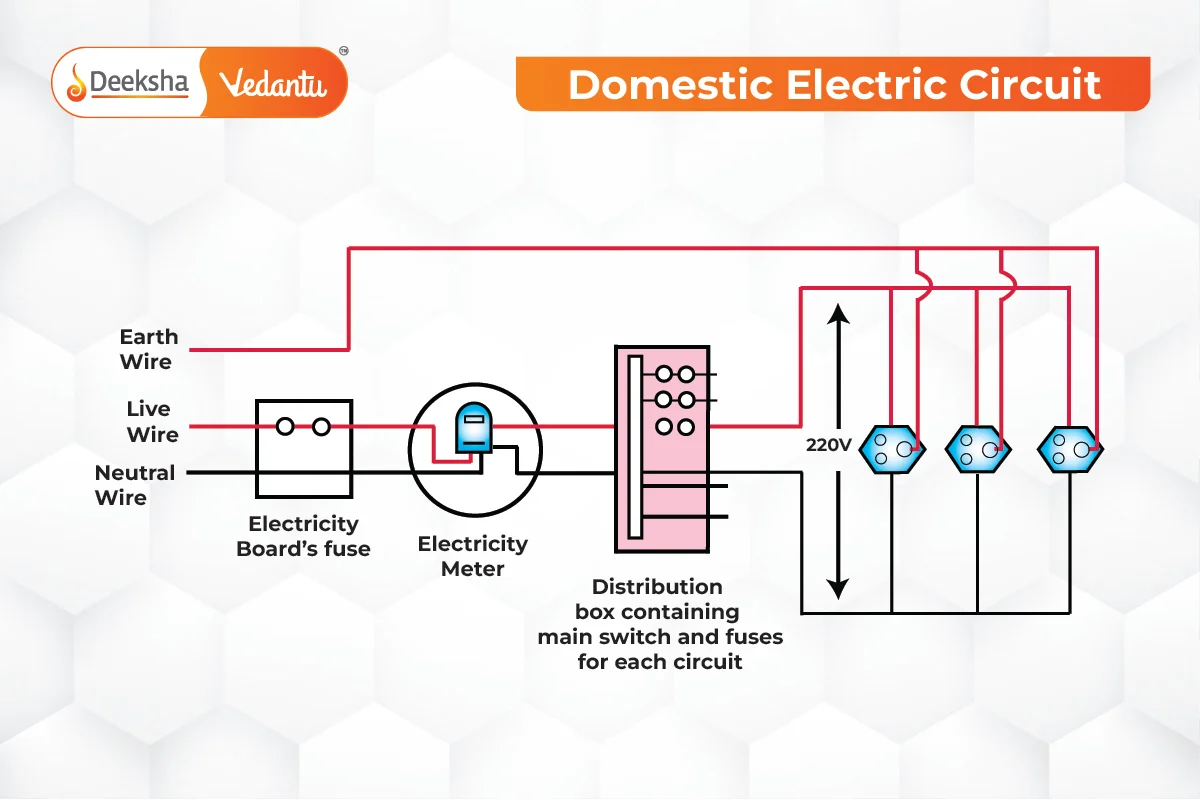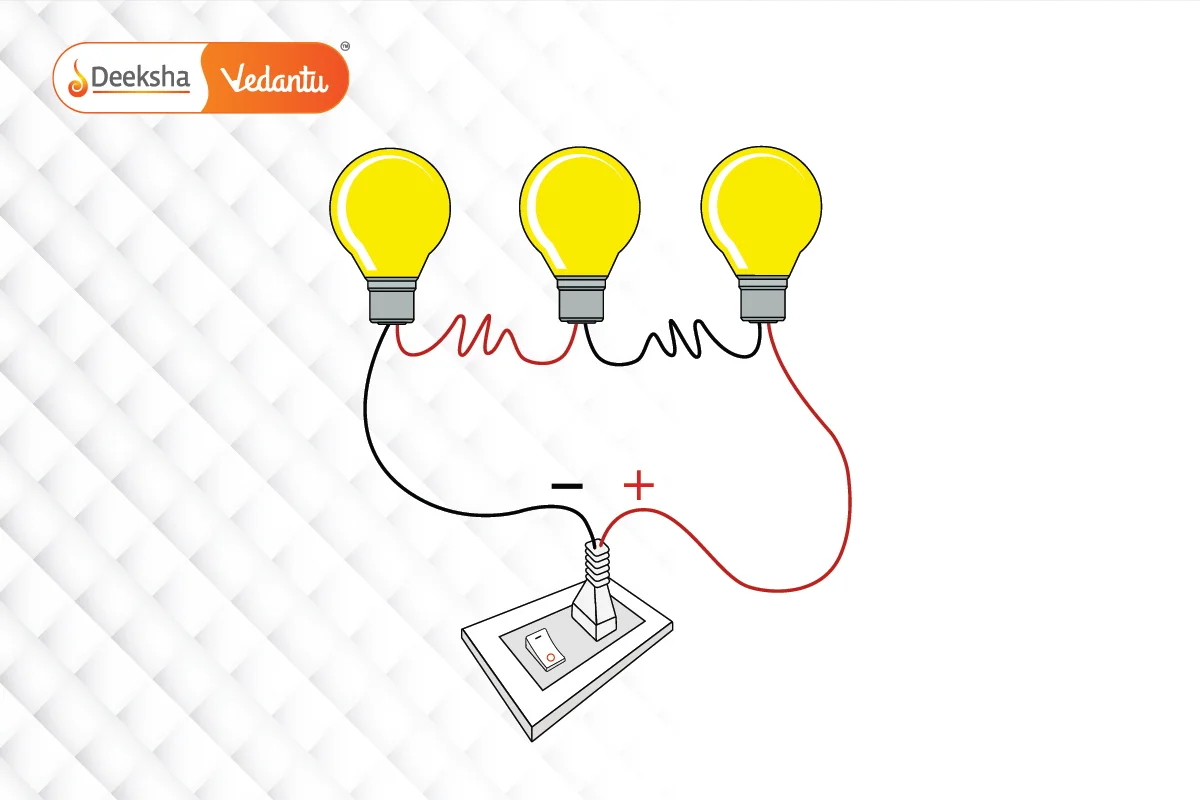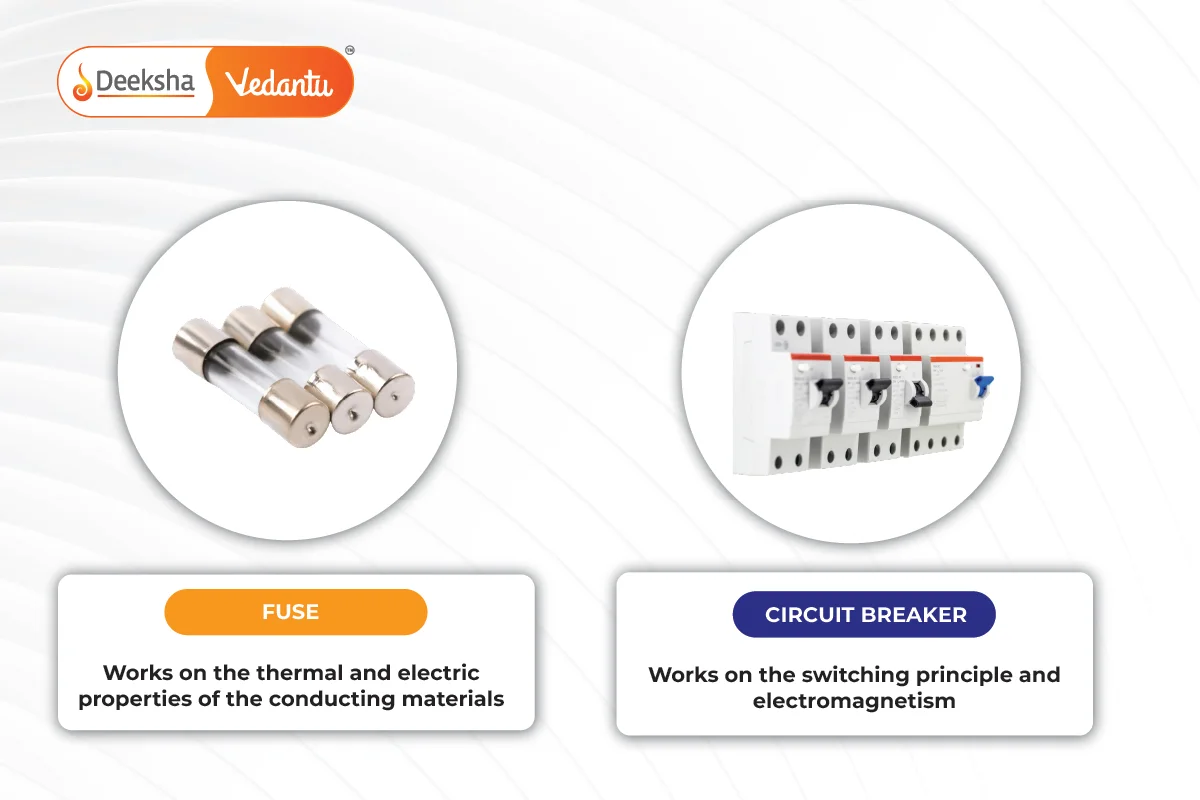Introduction
A domestic electric circuit refers to the electrical wiring system in our homes that allows us to use electrical appliances and devices efficiently and safely. It provides electric power to lights, fans, televisions, refrigerators, and other appliances.
Electricity is distributed to households through a network of cables and wires from power stations. In a domestic circuit, the electrical energy supplied is usually in the form of alternating current (AC), with a standard voltage of 220-240 V in India. The electrical power is delivered through a combination of live wires, neutral wires, and earthing to ensure safe operation.
Components of a Domestic Electric Circuit
A domestic electric circuit consists of several key components that work together to provide electrical power safely to different parts of the house:

- Mains Supply: Electricity enters the house from the mains supply, which is typically delivered by power stations. The mains supply provides alternating current (AC) at a voltage of 220-240 V in India.
- Electric Meter: The amount of electrical energy consumed in the house is measured by an electric meter. It records the power consumption in kilowatt-hours (kWh), which is used for calculating the electricity bill.
Main Wires
There are three main wires used in domestic circuits:
- Live Wire (Phase Wire): This wire is usually insulated with a red covering and carries the current from the power source to the appliances.
- Neutral Wire: The neutral wire, which is usually insulated with a black covering, completes the circuit by carrying current back from the appliance to the power source.
- Earth Wire: The earth wire, insulated with green covering, is a safety feature. It is connected to the body of metallic appliances to protect users from electric shocks in case of a fault.
Distribution Box
- Fuse: A fuse is a safety device that protects the circuit from overloading or short circuits. If excessive current flows through the circuit, the fuse wire melts, breaking the circuit and preventing damage to electrical appliances.
- Circuit Breaker: A circuit breaker is a modern alternative to fuses. It automatically switches off the electric supply when there is an overload or short circuit.
Switches
- Main Switch: The main switch controls the entire electrical supply to the house. It can disconnect all power in case of an emergency.
- Individual Switches: Appliances and lights are controlled using individual switches, which allow users to turn devices on or off as needed.
Electrical Sockets
- Two-Pin and Three-Pin Sockets: Sockets allow devices to be plugged into the electrical supply. A two-pin socket has only live and neutral connections, while a three-pin socket includes an earthing connection to protect against electric shocks.
Circuits in a Domestic Electric System
There are two types of circuits commonly used in homes: series circuits and parallel circuits. In domestic electrical wiring, appliances are typically connected in parallel to ensure consistent performance and safety.
Parallel Circuits in Homes
In domestic electric circuits, appliances and devices are connected in parallel rather than in series. This setup offers several advantages:

- Same Voltage: In a parallel circuit, all appliances receive the same voltage (220-240 V), ensuring that each appliance operates at its rated voltage.
- Independent Operation: Each appliance connected in parallel works independently of the others. For example, if one light bulb burns out, it does not affect the operation of other appliances in the circuit.
- Safe and Efficient: Parallel circuits are safer and more efficient. They prevent overloading of the circuit, and the current is divided among different appliances, reducing the risk of overheating.
Series Circuits (Not Common in Homes)
In a series circuit, all the components are connected one after another. If one component fails, the entire circuit is broken, and none of the devices will work. Due to this limitation, series circuits are not used for wiring in homes, as they are impractical for domestic purposes.
Electric Fuse and Circuit Breakers

Electric Fuse
An electric fuse is a simple safety device used in electrical circuits to protect against excessive current flow. A fuse consists of a thin wire with a low melting point. When too much current flows through the circuit, the wire heats up and melts, breaking the circuit and preventing damage to appliances or fire hazards.
- Function of a Fuse: The fuse wire melts when the current exceeds a safe limit, preventing overheating and protecting the circuit.
- Materials: Fuse wires are usually made of materials with low melting points, such as tin or lead.
Miniature Circuit Breaker (MCB)
A miniature circuit breaker (MCB) is an automatic device used to protect the electrical circuit from overload or short circuits. Unlike fuses, which need to be replaced after they blow, MCBs can be reset after tripping.
- Function of MCB: When an MCB detects excess current, it automatically switches off the power, cutting off the circuit. Once the problem is fixed, the switch can be manually reset to restore power.
Earthing in Domestic Circuits
Earthing is a safety measure in domestic electrical circuits. The earth wire (green wire) provides a low-resistance path for excess current to flow into the ground, preventing electric shocks. This is particularly important for appliances with metallic bodies, such as refrigerators, air conditioners, and washing machines.
How Earthing Works:
- If there is a fault in an appliance and the live wire touches the metal body, the current flows through the earth wire to the ground. This prevents the user from receiving an electric shock.
- In case of high leakage currents, the earth wire directs the current safely into the ground.
Power Consumption in Domestic Circuits
The amount of electricity consumed by electrical appliances is measured in kilowatt-hours (kWh). This unit is also known as a unit of electricity and is used by power companies to calculate the electricity bill.
Power Calculation:
The power consumed by an appliance is calculated using the formula:
Where:
= Power in watts (
),
= Voltage in volts (
),
= Current in amperes (
).
Energy Consumption:
The energy consumed by an appliance is calculated as:
For example, if a 100 W bulb is used for 10 hours, the energy consumed is:
Calculating Electricity Bill:
Electricity companies charge customers based on the total energy consumed in units. If the cost of electricity is ₹6 per kWh, and the household consumes 200 units, the electricity bill would be:
Real-Life Applications of Domestic Electric Circuits
Household Appliances: Appliances such as refrigerators, air conditioners, fans, and lights are connected to the domestic circuit in parallel to ensure that each receives the same voltage and operates independently.
Electric Fencing: Electric fencing around homes or agricultural fields uses the same principles of domestic wiring to protect properties from intruders or animals.
Surge Protection: Devices like surge protectors are used to safeguard appliances from sudden spikes in voltage, especially during lightning storms or power fluctuations.
Safety Measures: Modern homes use Residual Current Devices (RCDs) or Earth Leakage Circuit Breakers (ELCBs) to detect small leaks of current to the earth and disconnect the power to prevent electric shocks.
Key Practice Questions
Q1: Why are three-pin plugs used for heavy appliances, such as refrigerators and washing machines?
- Answer: Three-pin plugs are used for heavy appliances to provide an earthing connection. The third pin (earth) helps protect users from electric shocks by directing leakage currents safely into the ground.
Q2: A household consumes 500 units of electricity in a month. If the cost per unit is ₹7, calculate the electricity bill for the month.
- Answer: The total bill is calculated as:
Q3: Explain why fuses are placed in the live wire and not in the neutral wire.
- Answer: Fuses are placed in the live wire because the live wire carries the current from the mains supply. If a fuse were placed in the neutral wire, it would not disconnect the live wire, and the circuit would still be live, posing a danger of electric shock.
Q4: How does a circuit breaker protect the domestic electric circuit?
- Answer: A circuit breaker automatically cuts off the power supply when it detects an overload or short circuit. It helps protect appliances from damage and prevents fire hazards due to overheating.
FAQs
If a fuse blows, it breaks the circuit and stops the flow of current, protecting the appliances and preventing overheating or fire hazards. The fuse must be replaced to restore the connection.
Alternating current (AC) is used for domestic supply because it is more efficient for transmitting electricity over long distances. AC can be easily transformed to different voltage levels, which reduces energy losses in transmission.
A fuse is a one-time safety device that melts and breaks the circuit if excess current flows. An MCB (Miniature Circuit Breaker) automatically trips during overload or short circuits but can be reset after the fault is corrected.
The earth wire provides a low-resistance path for leakage currents to flow into the ground. It protects users from electric shocks by safely directing excess current away from the appliance in case of a fault.
Appliances are connected in parallel in domestic circuits to ensure that each receives the same voltage and operates independently. This setup also allows individual control of devices, so if one appliance fails, the others continue to function.
Related Topics
- Faraday’s Law
- P-N Junction
- Resistance Of A System Of Resistors
- Electric Current And Circuit
- Defects Of Vision And Their Correction
- Spherical Mirrors
- Magnetic Effects Of Electric Current
- Human Eye – Structure and Functioning
- Scattering Of Light
- Bernoullis Principle
- Acceleration
- Work, Energy and Power
- Noise Pollution
- Magnetic Field And Field Lines
- What is Hypothesis?







Get Social